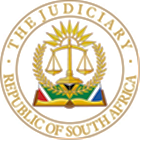
IN THE HIGH COURT OF SOUTH AFRICA
GAUTENG DIVISON JOHANNESBURG
CASE NO: 3631/2018
Heard on: 22/08/2023
Judgment: 30/10/2023

-
REPORTABLE: YES / NO
-
OF INTEREST TO OTHER JUDGES: YES / NO
-
REVISED.
________________
DATE SIGNATURE
IN THE MATTER BETWEEN:
NICOLOSI, VINCENZO N.O. FIRST APPLICANT
NICOLOSI, PENELOPE ANN N.O. SECOND APPLICANT
MILLER, JAMES N.O. THIRD APPLICANT
POSEMANN, MICHAEL WILLIAM HECTOR N.O. FOURTH APPLICANT
AND
ROSE, SIMON NICHOLAS JAMES FIRST RESPONDENT
ROSE, LEIGH JANET SECOND RESPONDENT
CITY OF JOHANNESBURG
METROPOLITAN MUNICIPALITY THIRD RESPONDENT
JUDGMENT
STRIJDOM AJ
INTRODUCTION
-
This is an application for the setting aside of the first and second respondents’ (‘the respondents’) proposed conditional counter-application as an irregular step in terms of rule 30 (‘the rule 30 application’).
-
On 12 December 2021 the applicants served a notice in terms of rule 30(2)(b) on the respondents, calling upon them to remove the cause of complaint within 10 days. The respondents failed to remove the cause of complaint within 10 days, or at all.
-
The respondents filed, on 15 December 2021, an application for the late filing of a conditional counter-application (‘the condonation application’). The applicants oppose the condonation application. The condonation application was enrolled for argument simultaneously with the rule 30 application, as the two applications are inextricably interwoven with each other.
THE SALIENT FACTS
-
The applicants and the respondents are neighbours. In the notice of motion in the main application, the applicants seek, inter alia, an order directing the respondents to remove certain features of their residence that were constructed illegally and to rectify the dwelling to comply with its approved building plans.
-
The dispute between the parties arose as a result of the respondents having deviated from the approved building plans in respect of their dwelling, by constructing additional windows and a sliding door and by extending balustrades along the flat roof of their two double garages, thereby creating additional balconies, which face the living areas of the applicants’ residence and which provide the respondents a view into the applicants’ main bedroom and other living areas, as well as their swimming pool area.
-
It is disputed that these features were, at the time of their construction, not permitted in terms of the respondents’ approved building plans. The respondents contend that they were approved by the municipality, some months after their construction.
-
The respondents oppose the main application. A full set of affidavits have been filed in the main application. The papers filed in the main application comprise some 475 pages, including copies of building plans in respect of the respondents’ dwelling and evidence by expert witnesses.
-
The main application has been ‘ripe’ for hearing for almost two years. The parties’ heads of argument were served on 21 November 2021 and 23 November 2021, respectively.
-
The counter-application was delivered some two years after pleadings had already closed in the main application. The applicants submit that the counter-application is an irregular step and seek an order setting it aside. The respondents seek an order condoning its irregularity.
THE CONDONATION APPLICATION
-
It was stated by the respondents that on 4 November 2021, they received the approved and final ‘as built’ drawings in respect of their dwelling and that of the applicants from the architects. It became evident from the applicants’ drawings (Annexures ‘CFA4’ and ‘CFA5’ to Annexure ‘A’), that the applicants’ ‘as built’ drawings comprise structures which were not approved by the Municipality. This was unknown to the respondents at the time the parties were exchanging affidavits.
-
It was submitted by the respondents that:
11.1 the reasons why the conditional counter-claim was not launched at an earlier stage have been satisfactorily explained and no wilful default is attributable to the respondents;
11.2 it would be undesirable for the respondents to launch a separate application for the following reasons:
11.2.1 the facts and legal issues are essentially the same. It is sensible and desirable that the issues be determined by a single Judge, so as to avoid not only a multiplicity of actions, but also the potential of conflicting judgments;
11.2.2 further, apart from resolving all issues expeditiously, there will also be a saving of costs, by having a single hearing;
11.2.3 it is fit and proper that the true issues and disputes should be properly and fully ventilated.
-
It was further submitted that the admission of the counter-application will not prejudice the applicants.
-
In terms of rule 6(7)(a) read with rule 24(1), the respondents were required to deliver their counter-application together with their answering affidavit. In terms of rule 24(5) their failure to do so ‘…shall be deemed to be an irregular step and the other party shall be entitled to act in accordance with rule 30.’
-
Rule 27(3) provides that:
‘(3) The court may, on good cause shown, condone any non-compliance with these rules.’
-
This requires of the respondents to satisfy the court that:
15.1 they have a reasonable and satisfactory explanation for the delay;
15.2 their application for condonation is bona fide and not made with the object of delaying the applicants’ claim;
15.3 there has not been a reckless or intentional disregard of the rules of court;
15.4 the proposed counter-application is clearly not ill-founded;
15.5 any prejudice caused to the applicants can be compensated for by an appropriate cost order; and
15.6 it would be in the interest of justice to grant condonation.
-
The respondents had access to the (alleged) facts relating to the applicants’ dwelling for more than three years. The final ‘as built’ plans in respect of the applicants’ dwelling were approved by the municipality on 28 February 2018.1
-
The respondents have failed to provide an explanation as to why they only became aware on 21 September 2021, when they read the applicants’ heads of argument in the main application, that they may have a counter-claim.
-
The respondents have failed to furnish an explanation for the delay to enable the court to understand how the delay really came about and to asses their conduct and motives. No affidavit by the architect confirming the respondents’ version has been placed before the court.
-
In the proposed counter-application, the respondents seek to enforce the Building Act. Their cause of action is based on the applicants’ alleged contravention of section 4(1) of the Building Act.
-
The respondents are required to allege and prove that the applicants’ contravention of section 4(1) of the Building Act has caused them harm. This is so because the Building Act is national legislation enacted for the benefit of the general public and not for the benefit of a specific person or class of persons.2
-
The respondents do not allege in their founding affidavit of the proposed counter-application that the applicants’ alleged contravention of the Building Act has caused them any harm. In their replying affidavit in the condonation application the respondents stated that they ‘would clearly be prejudiced…’3
-
In my view, the response in the replying affidavit cannot cure the defect in the founding papers in the proposed counter-application.
-
It was submitted by the applicants that the proposed counter-application relates to a set of facts that are completely different from those in the main application. The structures that form the subject-matter of the disputes in the main application are peculiar to the respondents’ dwelling. Those that form the subject-matter of the proposed counter-application are peculiar to the applicants’ dwelling. It relates to two separate and completely different buildings.
-
Should the court allow the respondents to re-open pleadings in the main application, it will result in a delay in the hearing of the main application. The applicants will be forced to prepare and deliver comprehensive answering affidavits, including affidavits by expert witnesses, to respond to the contents of the proposed founding affidavit in the counter-application. The respondents will then need to file replying affidavits, including most probably, affidavits by their expert witnesses. Such procedure, in my view, would be prejudicial to the applicants.
-
It was further argued by the applicants that the respondents’ proposed counter-claim has prescribed. This defence was raised by the applicants in the answering affidavit in the condonation application.
-
The respondents do not deny that they had knowledge of the material facts from which their claim arose, but they submit that such knowledge does not translate into knowledge, on their part of the alleged unlawfulness of the deviation, i.e., that it contravened section 4 of the Building Act.
-
The applicants submit that prescription in respect of the respondents’ proposed counter-claim commenced to run, at the very latest and at best for them, on 22 November 2017, more than three years before the delivery of the proposed counter-claim.
-
It is trite that application for condonation must be bona fide.
-
On the respondents’ own version, the proposed counter-application is for the purpose of ‘simply levelling the playing fields (sic).’4
-
In my view there will be no duplication of evidence and no danger of different judges making conflicting findings of fact, because the two applications relate to different sets of facts.
-
I concluded that the respondents have not shown good cause why condonation must be granted for the late application of the proposed counter-claim. It will also not be in the interest of justice to grant the said condonation.
32. In the result, the condonation application is dismissed with costs, and an order is granted in terms of prayers 1 and 2 of the applicants’ rule 30 application.
________________________________
STRIJDOM JJ
ACTING JUDGE OF THE HIGH COURT
OF SOUTH AFRICA GAUTENG DIVISION
JOHANNESBURG
Appearances:
For the Applicants: Adv J. Botha, SC
Instructed by: Strauss Scher Inc.
For the Respondents: Adv M. Nowitz
Instructed by: Nochumsohn & Teper Attorneys
1 Caselines: 017 – 10 para 28; par 10 at 017 - 4
2 Patz v Green and Co 1907 TS 427; Tavakoli and Another v Bantry Hills (Pty) Ltd 2019 (3) SA 163 (SCA) at [13]
3 Caselines: RA 017 A – 9 at par 9.3
4 Caslines: 017 A – 9; RA, condonation application: par 9.4
